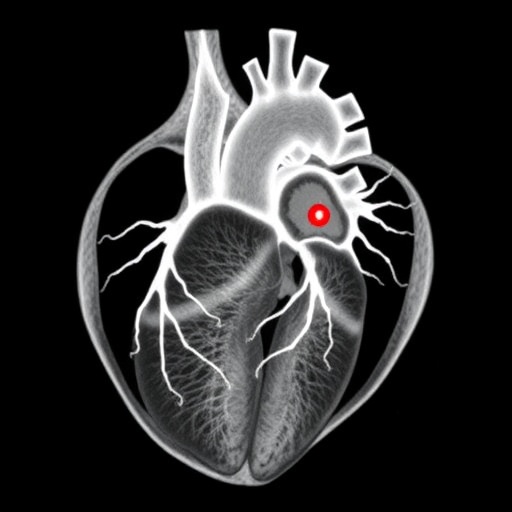INDIANAPOLIS — With the emergence of promising treatments that slow the cognitive decline of Alzheimer’s disease in patents, there are still questions surrounding side effects of the drugs. An Indiana University School of Medicine researcher is among the few neuroscientists investigating these adverse events, which can cause brain swelling and brain bleeding.

Credit: Indiana University School of Medicine
INDIANAPOLIS — With the emergence of promising treatments that slow the cognitive decline of Alzheimer’s disease in patents, there are still questions surrounding side effects of the drugs. An Indiana University School of Medicine researcher is among the few neuroscientists investigating these adverse events, which can cause brain swelling and brain bleeding.
Donna Wilcock, PhD, the Barbara and Larry Sharpf Professor of Alzheimer’s Disease Research in the Department of Neurology, received a three-year, $3.36 million grant from the National Institute of Neurological Disorders and Stroke (NINDS) to study why edema and microhemorrhages occur in the brains of some people who receive Alzheimer’s therapies.
Physicians identify these changes in the brain, called amyloid-related imaging abnormalities (ARIA), on MRI scans.
“In the Alzheimer’s research field, we don’t understand why this is happening,” Wilcock said. “This grant will aim to investigate the causes of these abnormalities and how to stop them from happening.”
Over the past few years, three potential Alzheimer’s disease treatments have garnered attention as drugs that target the removal of amyloid plaques in the brain — a hallmark of Alzheimer’s disease — in people who are diagnosed with an early or mild stage of Alzheimer’s disease.
-
Lecanemab, or Leqembi, is the only amyloid beta-directed monoclonal antibody to receive full approval from the Food and Drug Association and be available for patients to take in the clinic. It significantly removed plaques in a person’s brain during clinical trials.
-
Donanemab — a drug being developed by Eli Lilly and Company that’s awaiting a decision for approval by the FDA — has also shown promising results in its clinical trials.
-
Aducanumab, or Aduhelm, was recently discontinued by its manufacturer, Biogen. It received accelerated FDA approval in 2021 and was in a now suspended phase 4 clinical trial to verify the drug’s clinical effectiveness.
ARIA symptoms may include headache, confusion, nausea and dizziness. About 20% of people receiving lecanemab during clinical trials were found to have ARIA, with 3% of people experiencing symptoms. Nearly one third of clinical trial participants who took donanemab had ARIA, and 6% of those had symptoms. More than 40% of people who received Aduhelm in phase 3 studies had ARIA, and 25% had symptoms.
More than two decades ago, Wilcock published one of the first papers showing that older mouse models that received an anti-amyloid therapy saw fewer plaques but had microhemorrhages in the brain. However, Wilcock said basic science investigations — like hers — that initiated research into ARIA stopped as antibody therapies started to enter clinical trials around that same time.
But now, as ARIA cases have arisen in clinical trials and there are treatments either approved for the market or pending approval, Wilcock said her research team is studying what they first learned in the early 2000s about hemorrhages in mouse models and applying that to today’s research field. They’ll use new technologies to study the makeup of cells and proteins and new mouse models that better resemble the disease.
Wilcock, the director of the Center for Neurodegenerative Disorders in the IU School of Medicine-IU Health Neuroscience Institute and a primary member of Stark Neurosciences Research Institute, will use mouse models from the Model Organism Development and Evaluation for Late-Onset Alzheimer’s Disease (MODEL-AD) at IU School of Medicine and an anti-amyloid monoclonal antibody immunotherapy from Eli Lilly.
The mouse models will receive the antibody and researchers will perform MRI scans to identify ARIA in the brain using a state-of-the-art PET-MRI scanner, located in the Roberts Translational Imaging Facility at Stark Neurosciences Research Institute. Wilcock said the research team will use single-cell transcriptomic analysis to study what processes are happening around blood vessels that might be driving ARIA events in the brain.
“There’s a lot of evidence to suggest that ARIA is being driven by a neuroinflammatory event,” Wilcock said. “The microglial cells in the brain are activated, and that’s a good sign when it’s close to amyloid plaques to clear plaques out of the brain, but when that activation happens near blood vessels, it damages the blood vessels.”
Wilcock said the project will also investigate the role of an enzyme called MMP9 that’s been studied extensively in stroke that degrades the tight junctions — what holds cells together — and basement membranes — what maintains the structure — of blood vessels in the brain. The enzyme is significantly activated when given antibody immunotherapies, she said.
“Our hypothesis in the grant is that MMP9 is a downstream product of this inflammatory response. When that’s active in the blood vessels, it degrades them,” Wilcock said. “We’re also testing the hypothesis that if they can prevent the initial inflammatory response in the blood vessels, we may be able to prevent the downstream ARIA.”
The research team will use both antibody therapies and FDA-approved anti-inflammatory drugs to see if they prevent ARIA in the brain without slowing down the removal of amyloid plaque.
Wilcock said that since administering lecanemab to the first patient in September 2023, 40 patients have received the therapy at IU Health, and dozens of U.S. health systems are giving the treatment to Alzheimer’s disease patients across the country.
Being at high risk of developing ARIA is the biggest risk factor for taking the drug, Wilcock said, and patients are weighing the risk-benefit of the therapy.Some patients can’t receive these treatments due to a high risk of ARIA because of medications they take or signatures on damaged blood vessels that are detected on MRIs. Wilcock said physicians and researchers want to ensure these drugs are accessible and safe for patients.
“If we had a means of saying to someone, you’re at a higher risk of ARIA, but we know if we give you an adjunct therapy of a drug that’s already approved, it will reduce or eliminate your ARIA risk,” Wilcock said, “that would open the therapy to a much broader population.”
About IU School of Medicine
IU School of Medicine is the largest medical school in the U.S. and is annually ranked among the top medical schools in the nation by U.S. News & World Report. The school offers high-quality medical education, access to leading medical research and rich campus life in nine Indiana cities, including rural and urban locations consistently recognized for livability.




